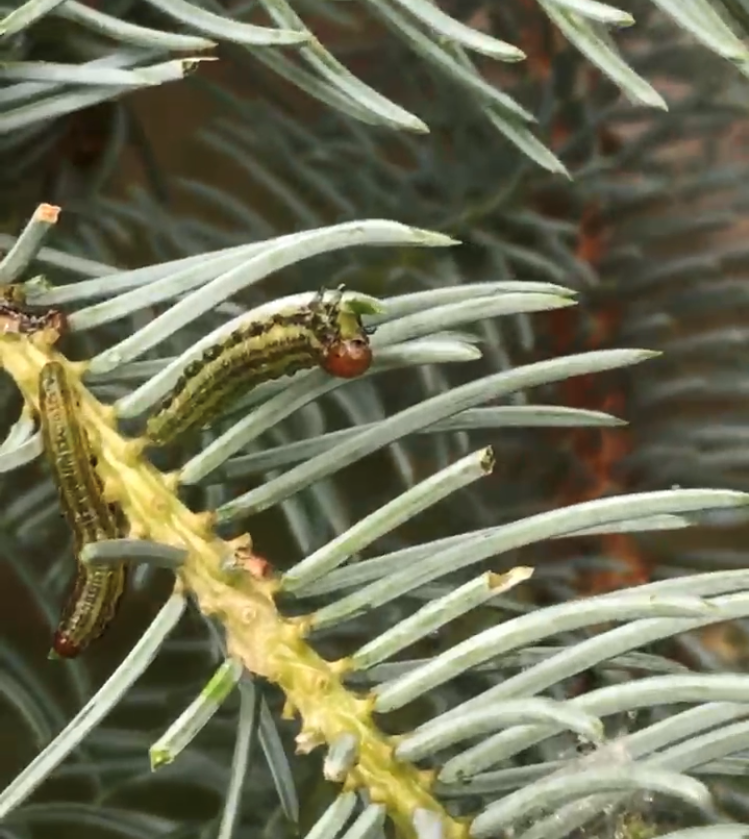Are your spruce trees looking a bit sad? Needlessly naked? The most notorious nasty killing Albertan spruce trees is sawfly. Gangs of this gluttonous little bug can eat all the needles from your young spruce trees in just one summer. What can you do? And how can you prevent it? Kentucky Blue Grass has the answers!
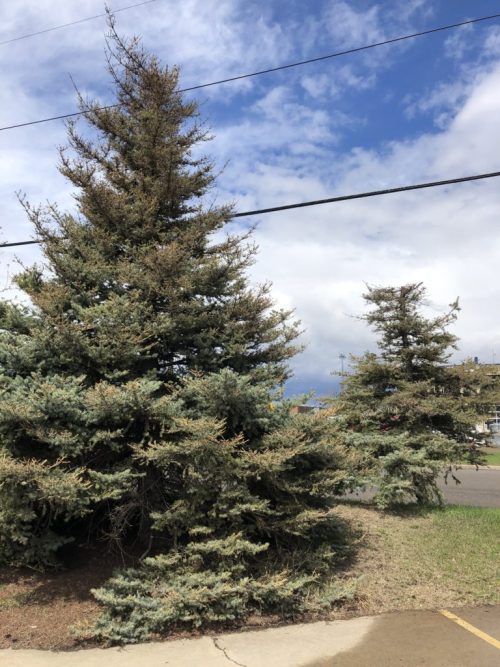
There are many types of sawfly and 5 of them attack spruce trees in the prairies. The most common and damaging in Edmonton is the yellow headed spruce sawfly. This pest is a major nuisance for urban and rural trees alike.
The Problem
Yellowheaded spruce sawfly or Pikonema alaskensis is the most devastating defoliator in Alberta. This wasp like fly emerges from their winter husks in the spring between late may and mid June just as fresh buds are growing on spruce trees. The females make their way to the branch tips where the newest needles are growing. She then cuts a slit into each needle base and lays a single egg in each.

The larvae take 4-12 days to hatch and feed for 4-6 weeks. During this feeding, the larvae eat the soft new needles first then as the larvae get bigger, they move in on the needles from previous years. If the larvae end up eating all the needles, they will begin eating the cortical tissue found on the branch tips.
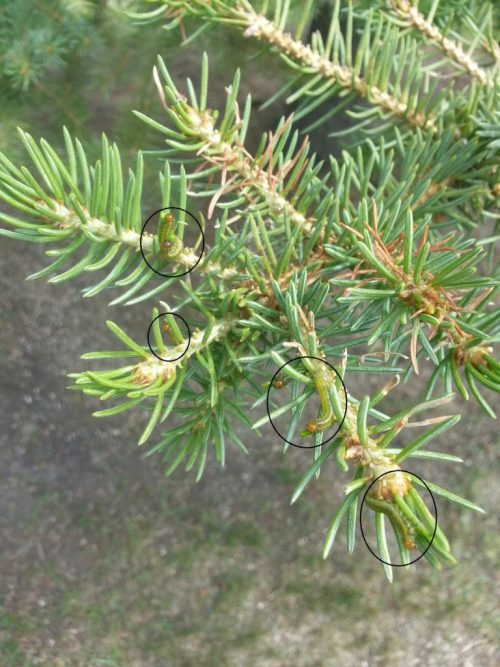
First damage to be noticed is usually at the top of the tree where the needles are all newer. The most severe damage is found at the bottom of the tree. As the larvae move down the tree seeking fresh needles, they will run out at the bottom of the tree and start stripping the mature needles. A heavy infestation can strip a young spruce tree in as little as 2 weeks. After the larvae complete their development in mid to late summer they will drop to the ground and dig into the soil surface. There they spin a cocoon to wait out the winter. If conditions are unfavorable the larvae will remain cocooned for years before pupating into an adult. Sawfly does not need to mate to lay eggs but without mating their offspring can only be male. Yellowheaded Sawfly have 1 generation per year.
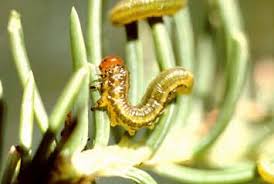
The Victims
Sawfly is not a major forest pest but are a significant problem for spruce trees openly grown such as shelter belts and urban landscaping. Most of the trees in those setting have great sun exposure and are all planted at the same time, causing the lose of entire groups of spruce. The yellow headed spruce sawfly targets all spruce species in Alberta. The larvae can strip an entire tree from 3 years old until it grows to about 18 feet tall. Large mature tree are rarely defoliated to the point of risk.
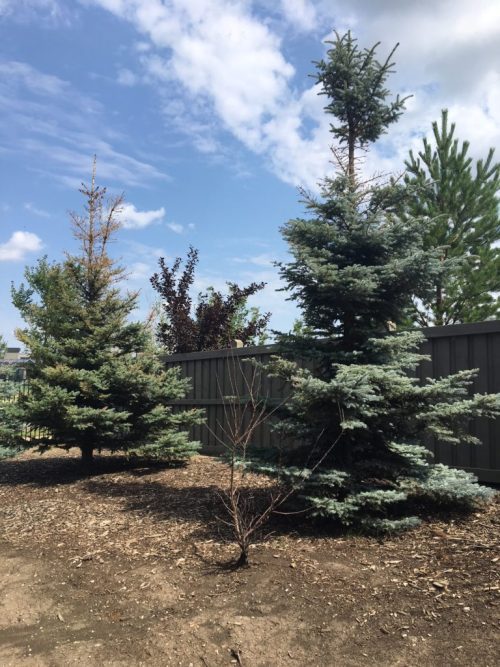
The Symptoms
Sawfly damage can be identified by missing needles usually starting on the top of the tree or tips of branches. A tree can only survive so many years without needles before dying. Even if they survive they may be stunted and grow unevenly.
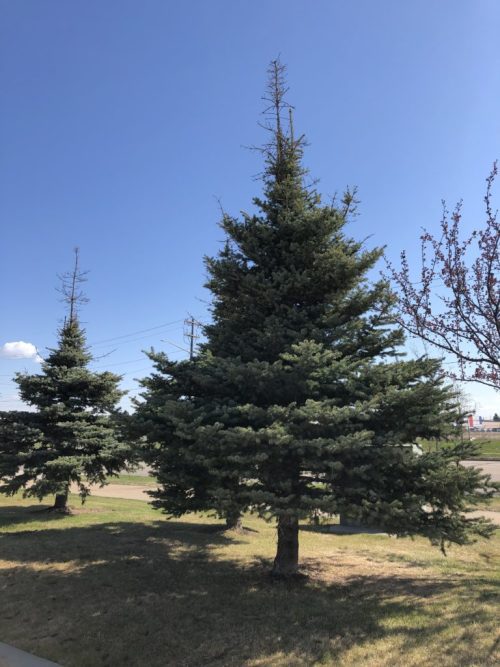

What can be done
First and foremost maintaining healthy trees is the most important in helping your spruce trees withstand sawfly. A healthy tree can survive being defoliated for longer and will be able to heal the damage faster. Ensure your spruce trees get enough water, nutrients and sunlight.
- For a small tree and minor infestation, the larvae can be picked off the branches and destroyed.
- A high-pressure spray can be used to knock the insects off, but more mature larvae can make their way back into the tree if not destroyed. On larger trees it may be hard to spray the entire infestation.
- Insecticide can be applied to the tree in the form of a spray. Kentucky Blue Grass provides this service. The spray needs to be timed for when the larvae first emerge. This treatment will effectively kill the current infestation.
Professional Reference
Denise Allen, ISA Certified Master Arborist, May 8th 2020
References
Hugh Philip & Ernest Mengerson, University of Alberta, “Insect Pests of the Prairies”
W.G.H Ives & H.R Wong, Government of Canada Canadian Forestry Service, “Tree and shrub insects of the prairie provinces”
https://www.fs.usda.gov/Internet/FSE_DOCUMENTS/fsbdev2_037814.pdf


